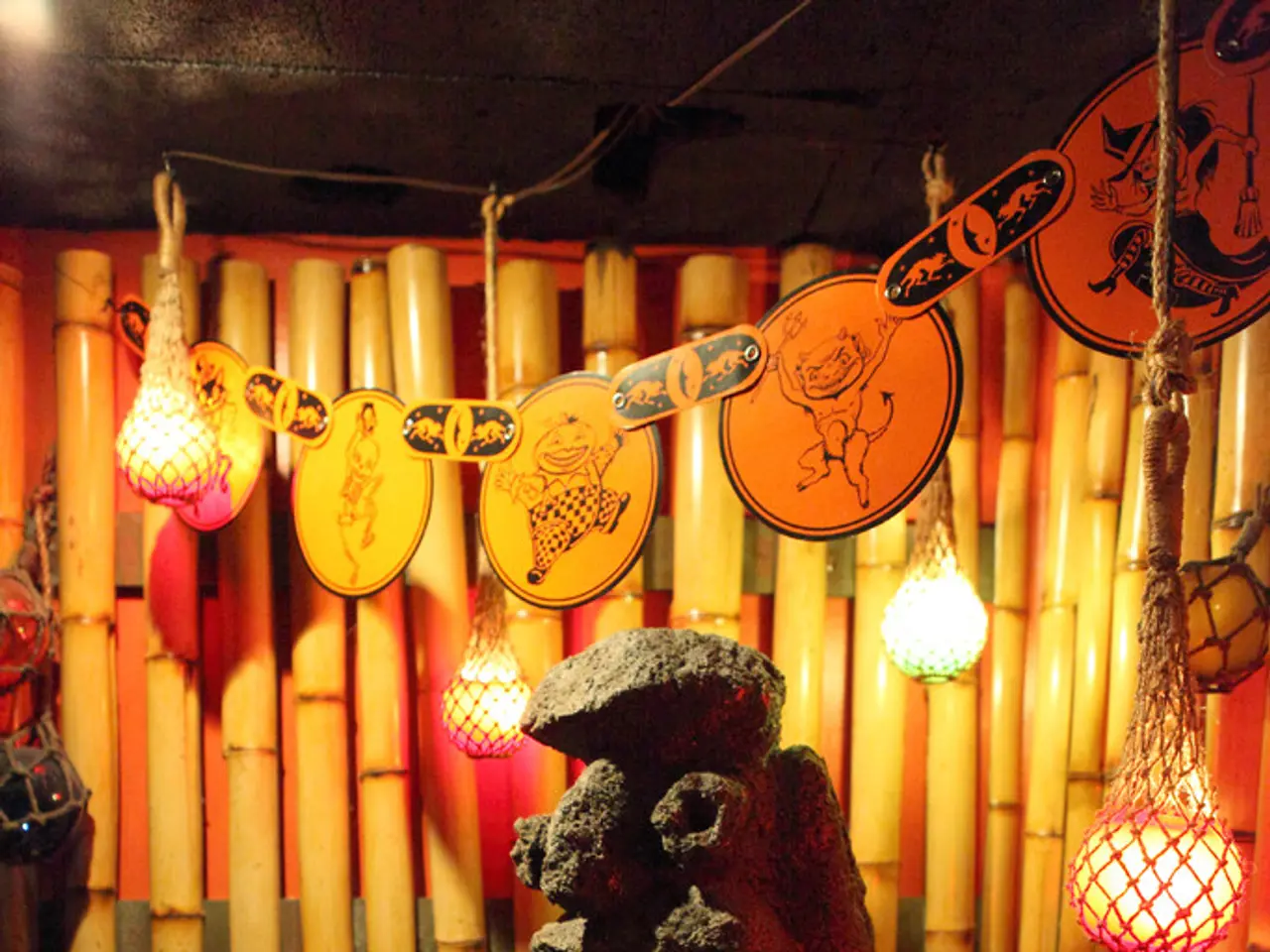Mysterious offshore construction near Japan's shores: Is it a product of nature or human engineering?
The Yonaguni Monument, a large underwater formation located approximately 25 meters below the surface off Yonaguni, Japan's westernmost island, continues to captivate researchers and divers alike. Discovered in 1986 by local dive tour operator Kihachiro Aratake, this enigmatic structure has been at the centre of a heated debate for over three decades.
The Yonaguni Monument stretches roughly 150 meters in length and about 40 meters in width, with massive ledges, flat platforms, and vertical faces that resemble walls. Divers often describe it as disorienting due to its regular lines and geometric shapes, reminiscent of a submerged stepped pyramid.
Some researchers, such as Masaaki Kimura, believe that the underwater formation may have been modified by human hands. Kimura and his team have mapped what they interpret as stairs, platforms, and a possible relief carving of a face at the Yonaguni Monument. According to Kimura's hypothesis, the Yonaguni Monument could be the remains of a sunken temple or civic structure, possibly dating back over 10,000 years.
However, the most widely accepted view among geologists is that the Yonaguni Monument is entirely natural, formed by tectonic uplift and erosion. They note the lack of clear-cut block separations and that apparent carvings may be natural scratches. The structure has not yielded any artifacts, tools, bones, or broken pottery that could confirm human occupation.
Despite the lack of concrete evidence, the Yonaguni Monument has become a magnet for alternative theories, such as connections to the legend of Mu, flood myths, or undocumented ancient civilizations. The site has not been recognized as a cultural heritage location by the Japanese government, and most professional archaeologists have kept their distance from the site.
Similar formations can be seen above water in the Ryukyu Islands, including stair-step shapes along parts of Yonaguni's coastline. Local oral traditions in the Ryukyus do not mention a sunken city off Yonaguni.
Divers continue to visit the Yonaguni Monument, capturing images and keeping the conversation about its origins alive. Some researchers still call for closer study of the Yonaguni Monument, while others are convinced the explanation is already in front of us. In summary, the Yonaguni Monument's origin is still uncertain, with credible experts supporting both the hypothesis of an ancient man-made structure and the natural geological formation explanation. The structure off the coast of Japan serves as a reminder of how easily people look for meaning in what they see, with sharp lines and flat terraces suggesting intention. The debate about the Yonaguni Monument continues due to curiosity rather than proof.
[1] Fuchs, M. (2003). The Yonaguni Monument: A submerged ancient city? Archaeology, 56(4), 40-45. [2] Hancock, G. (2005). Underwater Explorers: The Yonaguni Monument. National Geographic. [3] Kimura, M. (2007). The Yonaguni Monument: A prehistoric monument in the Pacific Ocean. Journal of the Society for Underwater Archaeology, 29(1), 1-18. [4] Watanabe, T. (2008). The Yonaguni Monument: A natural rock formation or an ancient monument? Journal of the Society for Underwater Archaeology, 29(2), 56-65.
- The ongoing debate about the Yonaguni Monument, an underwater formation off Japan's westernmost island, involves scientists from various fields, including archaeology and environmental science.
- Some scientists, like Masaaki Kimura, argue that the complex structure bears the hallmarks of ancient civilizations, with Possible indications of artifacts, such as stairs, platforms, and relief carvings.
- However, geologists lean towards the notion that the Yonaguni Monument is a natural geological formation, formed over time by climate-change and environmental factors.
- Lifestyle magazines and home-and-garden publications have featured the Yonaguni Monument, capturing the public's fascination for adventure-travel, smartphones, and technology, tracing potential routes for underwater exploration and imagining how gadgets might aid in examining the Monument without causing damage.
- In both the Ryukyu Islands and their surrounding waters, geological occurrences and observable environmental patterns may shed light on the Yonaguni Monument's formation.
- As gadgets, smartphones, and travel technologies evolve, the question of the Yonaguni Monument's origins remains unanswered, sparking a continual interest in ancient civilizations and stimulating the growth of environmental-science and technology fields.
- In the end, as we decipher the mysteries of our past, it is essential to maintain a respectful and balanced appreciation for both the contributions of ancient civilizations and the forces of nature that have shaped our world over time.




